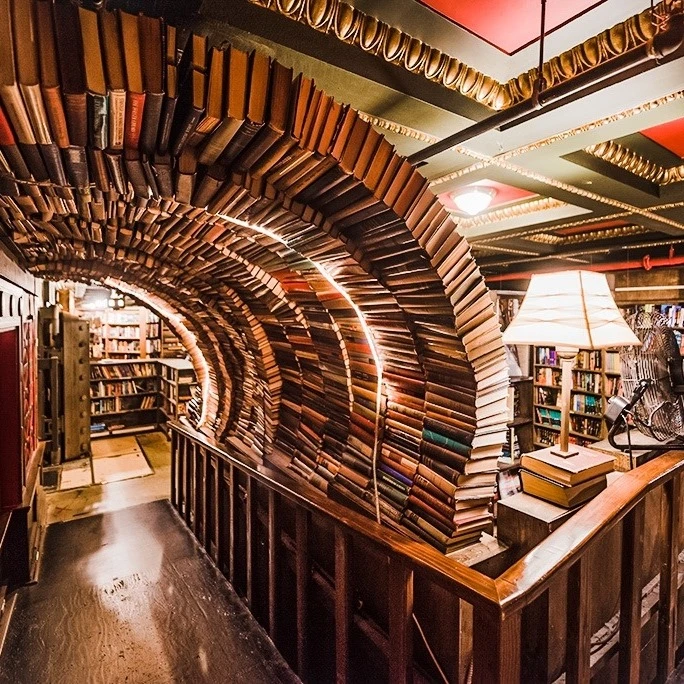For any bookworm, your bookshelf is more than just a piece of furniture; it is an extension of your reading personality, a way to showcase your favourite novels and ever-growing collection. A well-organised bookshelf is a beautiful thing; it should be practical, strategically use space, and be visually appealing all at once. From colour-coded chaos …
1. The Color Spectrum
If you’ve ever been on BookTok or Bookstagram, you’ll inevitably have seen bookshelves organised by rainbow-hue. The most striking, visually, of the organisational methods here, you simply go by the colour on the book’s spine and create a spectrum that transitions from cherry reds to vibrant purples. Best suited to those who want to use their bookshelves as a beautiful backdrop, the big downside to this option is the fact you’ll have to remember each book’s spine colour to be able to find it again quickly. Beauty comes at a price!

Top Tip: If you love this idea, but hate the thought of searching endlessly for the books, then maybe just colour-code a particular genre? A Romance Rainbow, perhaps?
2. Genre Galore
For those who enjoy browsing their shelves or are self-confessed mood readers, dedicated genre-based sections are a great idea. Organise your shelves by mystery, fantasy, romance, science fiction, etc. Feel like reading non-fiction? You now know directly where to go! Not only does this method make it easier to find books within a preferred genre, but it also allows you to showcase your diverse reading interests. Some books encompass various genres, so classifying each book into one genre might not be the most straightforward task, but overall, this is a solid method of organisation, if you have the patience and time.

Top Tip: If you have many books that straddle multiple genres, why not consider subcategories within the genre shelves?
3. Author Autonomy
Arguably, the easiest way to organise books for finding later is alphabetically by author. Organising from A-Z offers a clear sense of order and structure to your collection and is a guaranteed way to find your chosen book easily later on. You could also micro-organise within each author by going chronologically which is a great way to show off the evolution of your favourite writer, ideal for any rereads of their work. It may not be the most visually appealing approach, but it definitely is a very logical one!

Top Tip: For a more aesthetic alphabetical shelf, you could also organise each section by height.
4. Size Matters
This leads nicely to the next suggestion – organising by size. Embrace the beauty of asymmetry by organising all of your books according to their height. You can create compelling arrangements by stacking larger coffee table tomes alongside slender paperbacks. Experiment with adding depth and dimension to your bookshelves by laying some horizontally. This method really showcases the unique characteristics of each book. It may not be the most efficient way to find books later, but it will flow so well visually.

Top Tip: If the thought of many gaps above books or the inability to find the book you’re looking for displeases you, why not consider combining this organisational tactic with another method, such as having the same height mystery novels?
5. Personalised Perfection
Your bookshelves give a good insight into the kind of person you are, so why not infuse them with even more personality? From framed photographs and travel souvenirs to knick-knacks and collectables, let your bookshelves reflect the essence of who you are. You can be as quirky, colourful, or classic as you wish. By blending literature with personal artefacts, you’ll create a space that is truly you and turn your bookshelves into a stunning focal point.

Top Tip: Why not try creating themed personal spaces as well? If you’re a fan of travel literature, you could use postcards and miniature landmarks as decorations.
6. Minimalist Chic
This last suggestion will be controversial, but the ultimate look for a minimalist bookshelf is to turn the books backwards, spines towards the wall. This is a cohesive and fluid look, with the differing tones of the paper adding interest and variety. It is straightforward to achieve, so the books you use are not significant here. Plus, if your bookshelf is in the line of direct sunlight, this method means the book covers won’t fade!

Top Tip: If you like this look but don’t want to commit fully, try it on a smaller bookshelf or in a room that needs a sleeker look.
Ultimately, the question is, “What is the best way to organise a bookshelf?” has no straightforward answer. It is all about personal preference, your unique style, and the space available. Whether you’re aiming for minimalist chic or maximalist charm, remember that your bookshelf is more than just a piece of furniture—it reflects your reading journey and is a testament to your love of literature. Embrace the possibilities, unleash your creativity, and transform your bookshelf into a beautiful and valuable space. Happy organising!
Join our community of 1.5M readers
Like this story? You'll love our free weekly magazine.








